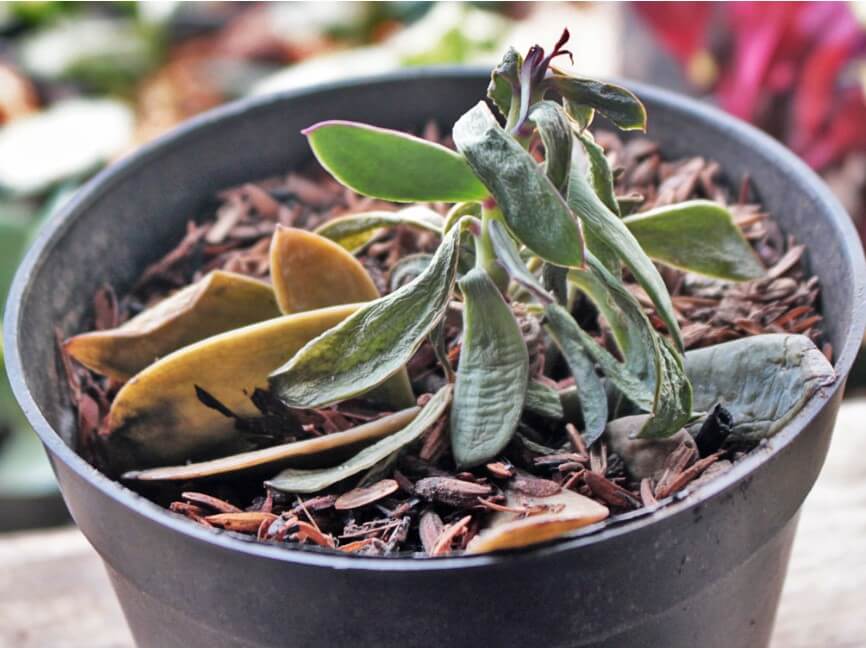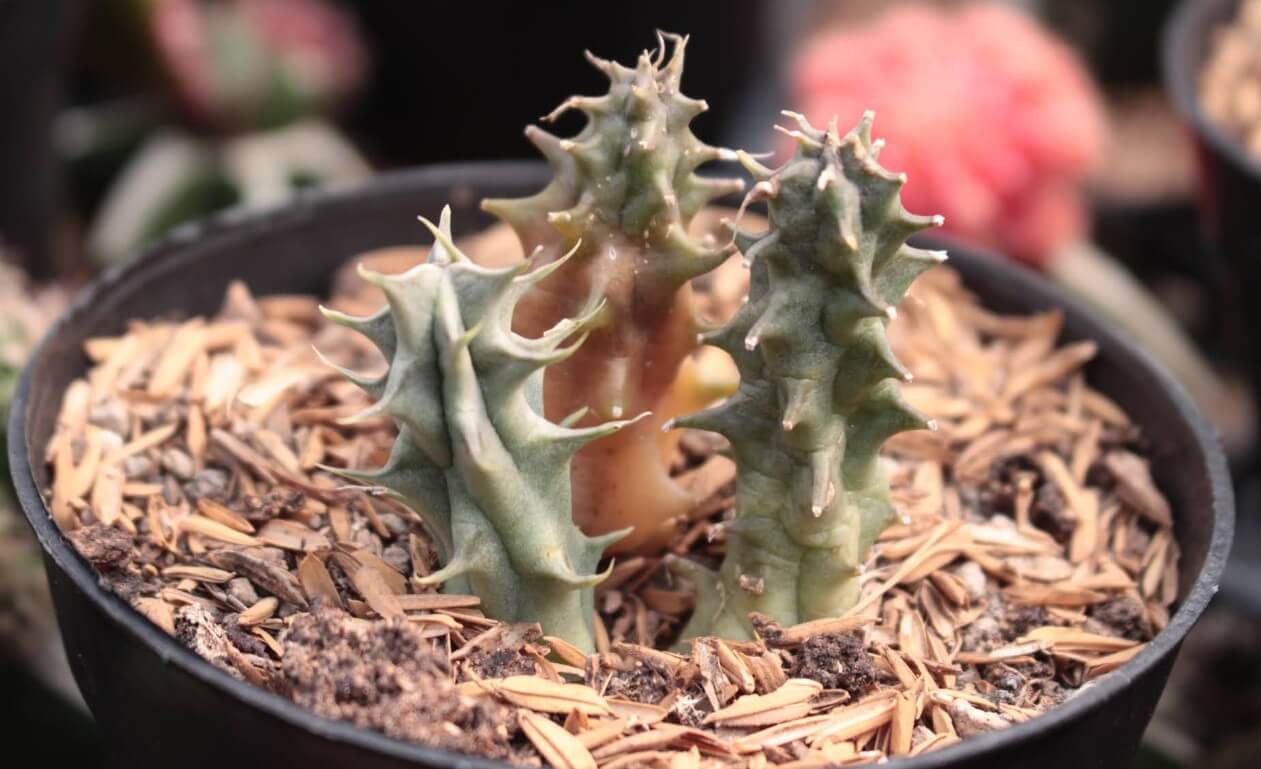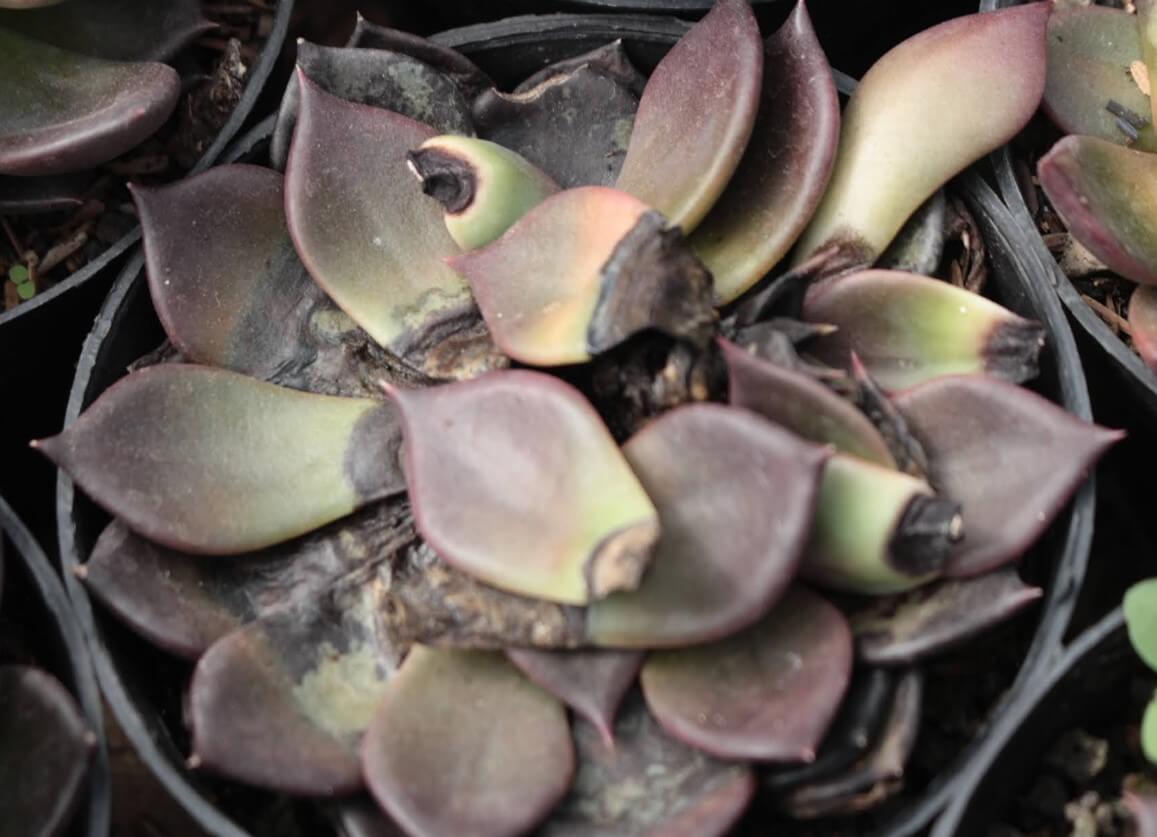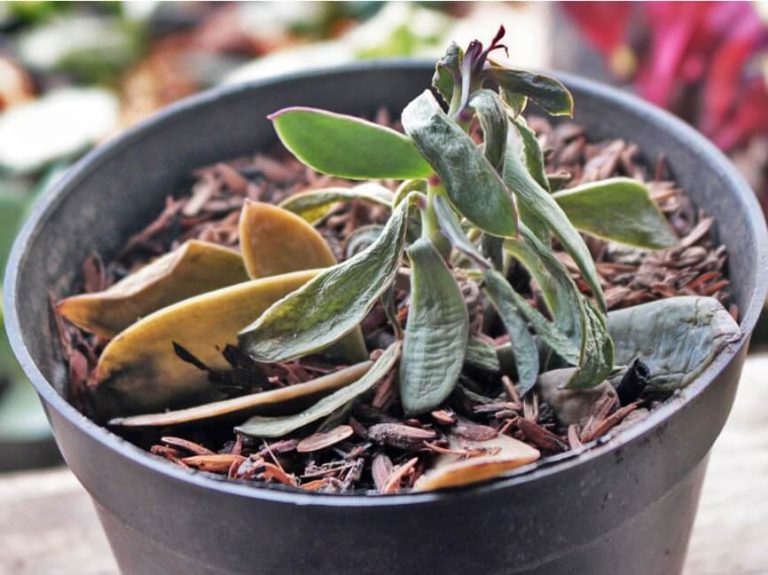Why Are My Succulents Dying? The common reasons are improper watering (overwatering or underwatering), improper drainage, and Insufficient sunlight.
This blog will guide you through the primary reasons why your succulent may be on a downward spiral, providing insightful tips to revive them. Let’s uncover the secrets behind reviving dying succulents!
Key Takeaways
| Takeaway | Description |
|---|---|
| Overwatering and Underwatering | Common reasons for succulent death. Find the right balance in watering. |
| Proper Drainage | Prevents root rot. Use pots with drainage holes and well-draining soil. |
| Insufficient Sunlight | Causes succulents to die. Balance adequate light for photosynthesis. |
Common Reasons for Succulent Death
Succulents can die due to various reasons, including over-watering, under-watering, lack of proper drainage, insufficient sunlight, soil issues, pests and diseases, and improper pot or container choices.
Why Are My Succulents Dying? Over-watering
Too much water kills succulents. People think these plants need a lot of water, but they don’t. It’s like drowning them. Echeverias, one type of succulent, can’t handle too much water.
The leaves turn weird colors and feel soft or mushy when touched if there is too much water. Sometimes the leaves fall off because they are so wet and mushy.
Why Are My Succulents Dying? Under-watering
Succulents hold water in their leaves. These plants need less water than most, but they do get thirsty! Under-watering can lead to succulent death. The plant may look thin and frail with dried out, brown or black leaves.
It’s easy to fix under-watered plants. Give your succulent a deep drink of water until the soil is wet all over. After that, always check the soil before watering again. Make sure it is dry from the last watering session!
Why Are My Succulents Dying? Lack of proper drainage
Water can kill your succulents if it doesn’t drain well. Too much water makes roots soggy and they rot. This is called “root rot“. It often kills the whole plant. Pots without good drainage keep soil too wet.
Large pots can do this, too. The extra soil stays wet for a long time which can also cause root rot in your succulent plants. So, proper drainage is very important to stop your succulents from dying.
Why Are My Succulents Dying? Insufficient sunlight
Insufficient sunlight is a common reason why succulents die. If your succulent doesn’t get enough light, the bottom leaves may start to die. This happens because succulents need light for photosynthesis, which helps them make food and grow.
Without enough light, they can also have discolored or misshapen growth. However, it’s important to note that too much sunlight can also harm succulents. They might develop dry, brown spots or streaks if exposed to excessive sun.
So it’s crucial to find the right balance and provide your succulent with adequate but not excessive sunlight.
Why Are My Succulents Dying? Soil issues
One common reason why succulents die is because of soil issues. The wrong type of soil can cause problems like overwatering and poor drainage, which makes it hard for succulents to survive.
Succulents need well-draining soil that allows excess water to escape quickly so their roots don’t rot. Using a specialized succulent mix or adding perlite or sand to regular potting soil can improve drainage.
Avoid using heavy soils that retain too much moisture, as this can lead to root rot and eventually kill the plant. Remember, succulents are adapted to thrive in dry conditions, so choosing the right soil is crucial for their survival.

Why Are My Succulents Dying? Pests and diseases
Pests and diseases can be a major cause of succulent death. Some common pests that can harm your succulents include scale, mealybugs, spider mites, and fungus gnats. These pests feed on the leaves and stems of the plants, causing damage and even killing them if not treated promptly.
It’s important to regularly inspect your succulents for any signs of infestation, such as sticky residue or tiny insects crawling on the leaves. Diseases like powdery mildew can also affect your succulents if they are exposed to excessive moisture or overhead watering.
Promptly identifying and treating pests and diseases is crucial to protect your succulent plants from further damage.
Why Are My Succulents Dying? Improper pot/container
Using the wrong pot or container can be a big problem for your succulent. The size of the pot matters because if it’s too small, your succulent won’t have enough space to grow properly.
On the other hand, if the pot is too large, it can hold excess water and cause overwatering. Poor drainage is also an issue – without proper holes in the bottom of the pot, water will accumulate and lead to root rot.
It’s important to choose a well-draining container that allows water to flow out easily. So make sure you pick the right pot or container for your succulent to ensure its health and survival!
Why Are My Succulents Dying? Signs and Symptoms
If you notice dried out, dying leaves or mushy roots and stems on your succulent, it’s a sign that something is wrong. Click here to learn more about the signs and symptoms of a dying succulent and how to save it.
Dried out, dying leaves
If you notice that the leaves on your succulent are dried out and dying, it’s a sign that something is wrong with your plant. This is often caused by overwatering or underwatering.
When you give your succulent too much water, the roots can become overwhelmed and start to rot, leading to dried out leaves. On the other hand, if you don’t water your succulent enough, it can become dehydrated and the leaves will dry up and die.
It’s important to find the right balance when watering your succulents to keep them healthy.
Mushy roots and stems
Overwatering is one of the most common reasons why succulents develop mushy roots and stems. When you give your succulent too much water, the excess moisture can cause the roots to rot.
This leads to a mushy texture in both the roots and stems of your plant. If you notice black spots or soft areas on the leaves or stem, it’s a sign that your succulent has been overwatered.
It’s important to let the soil dry out between watering sessions and make sure your pot has good drainage to prevent this problem.
Why Are My Succulents Dying? Leaf burn
Leaf burn in succulents is a common problem that can happen when they are exposed to too much sunlight. This stress from overexposure can make the leaves turn brown or even become crispy.
It can also occur if the succulent is suddenly moved from a cool environment to direct sunlight. Other factors like cold temperatures, pests, and fungus rot can also cause browning of the leaves.
So, it’s important to provide your succulents with adequate sunlight without exposing them to extreme conditions that could harm their leaves.

Why Are My Succulents Dying? Pest infestation
Pest infestations can be a common cause of succulent decline. Insects like mealybugs, aphids, and red spider mites can attach themselves to your succulents and make them sick. These pests feed on the sap of the plants and can cause damage to the leaves and stems.
Gnats are attracted to over-watered succulents, and they can breed in the damp soil, making things worse for your plant. It’s important to recognize the signs of a pest infestation so that you can take action quickly.
This includes looking out for tiny bugs on your succulent or noticing small webs or white cottony material on its leaves. If you suspect a pest problem, there are treatments available such as insecticidal soap or neem oil that can help get rid of these unwanted visitors.
How to Revive an Over-watered Succulent
To revive an over-watered succulent, start by pruning away any mushy or rotting parts of the plant. Then, carefully remove it from its current pot and replant it in fresh, well-draining soil.
Adjust your watering habits to ensure you’re not over-watering the succulent again and don’t worry about Why Are My Succulents Dying?
Pruning and repotting
Why Are My Succulents Dying? To revive an overwatered succulent, pruning and repotting are important steps. Start by removing any mushy or rotten leaves, as this can help prevent further damage to the plant. If the roots of the succulent are completely rotten, they should be trimmed off along with any part of the stem that looks puckered or has black or brown spots.
After pruning, it’s time to repot your succulent. Choose a fresh pot with proper drainage holes and fill it with well-draining soil specifically made for succulents. Gently place your pruned succulent into the new pot and make sure it is positioned securely.
The next step is to let the soil dry out completely before watering again. This will help avoid overwatering and give your succulent a chance to recover. Remember not to water too frequently to prevent future issues.
Using well-draining soil
To prevent your succulents from dying, it’s crucial to use well-draining soil. Succulents don’t like their roots sitting in water for too long, so the right soil mix can make a big difference.
Well-draining soil allows excess water to pass through easily, preventing root rot and other problems caused by overwatering. When choosing soil for your succulents, look for a mix that contains materials like perlite or pumice, which help with drainage.
By using well-draining soil, you can create an environment that promotes healthy growth and prevents issues related to excessive moisture.
Adjusting watering habits
To keep your succulents healthy, it’s important to adjust your watering habits. Succulents don’t need a lot of water and overwatering is a common cause of their death. It’s best to let the soil dry out between each watering session.
Remember, succulents are drought-tolerant plants, so they can withstand longer periods without water. If you live in a humid area, your succulents may require even less water than those in drier climates.
For indoor succulents, be sure to adjust your watering based on their specific environment.
How to Revive an Under-watered Succulent
To revive an under-watered succulent, remove any damaged foliage and roots, then provide proper watering and hydration. Learn the techniques to save your succulents from wilting! Read more.

Removing damaged foliage and roots
If you have a succulent that is not doing well, it may have damaged foliage and roots. Removing these can help the plant recover and grow new leaves. Damaged roots are often a sign of under-watering, so it’s important to address this issue.
To revive your succulent, carefully remove any brown or mushy leaves and trim off any damaged roots. Then, replant the succulent in well-draining soil to prevent root rot. By taking care of your succulent and removing damaged foliage and roots, you can help it thrive and prevent further decline.
Providing proper watering and hydration
Why Are My Succulents Dying? Proper watering is crucial for keeping your succulents healthy. These plants are naturally adapted to dry conditions, so they don’t like too much water. To give your succulents the right amount of hydration, make sure to soak the soil thoroughly during watering sessions.
However, avoid overwatering or letting excess moisture sit in the soil, as this can lead to root rot and ultimately kill your succulent. Remember that quick water flow through well-draining soil mimics their native habitat and helps them thrive.
By following these watering guidelines, you’ll be able to keep your succulents happy and prevent them from dying.
Preventing Succulent Death
To prevent succulent death, you need to master proper watering techniques, choose the right pot and soil, provide adequate sunlight, and regularly inspect for pests. Don’t let your precious succulents suffer – read on to learn how to keep them thriving!
Proper watering techniques
Proper watering is essential for keeping your succulents healthy and preventing them from dying. One of the most common mistakes people make is over-watering their succulents. This can lead to root rot and eventually cause the plant to die.
To avoid this, you should water your succulents thoroughly but infrequently. Wait until the soil is completely dry before watering again. When you do water, make sure to soak the soil until water runs through the drainage holes in the pot.
Excess water should be allowed to drain off freely so that it doesn’t sit in the pot and cause root problems. By following these proper watering techniques, you can help your succulents thrive and prevent them from dying due to improper hydration.
Choosing the right pot and soil
To ensure your succulents thrive, it’s important to choose the right pot and soil. Succulents prefer pots that are not too big, so pick one that is just slightly larger than the plant itself.
This will prevent overwatering and keep the roots from sitting in moisture for too long. When it comes to soil, regular plants like loamy soils, but succulents do better with sandy soil that drains well.
This helps prevent root rot and ensures that excess water doesn’t linger around the roots. By choosing a suitable pot size and well-draining soil, you can create optimal growing conditions for your succulent plants.
Providing adequate sunlight
Succulents need the right amount of sunlight to survive. Too much sun can burn their leaves, while too little can cause them to wither and die. It’s important to find a balance by giving your succulents 2-4 hours of direct sunlight and 4-6 hours of indirect sunlight each day.
This will help them grow strong and healthy. Placing them in low-light areas can lead to their demise, so make sure they get enough light to thrive!

Regular inspection and pest control
Why Are My Succulents Dying? Regularly inspecting your succulents and implementing pest control measures is crucial for keeping them healthy and preventing their untimely demise. By regularly checking your plants, you can catch any signs of distress or issues early on before they worsen.
This allows you to take action promptly and address any problems that may arise. Additionally, pests can pose a significant threat to your succulents, as they can damage the leaves and stems, making the plant more susceptible to disease or death.
Implementing effective pest control methods will help keep these unwanted visitors at bay, ensuring the overall health and longevity of your succulents.
Troubleshooting Other Common Issues
Soil-related problems can contribute to the death of succulents, so it’s important to ensure you’re using the right soil mix and providing proper drainage. Additionally, considering your climate and hardiness zone is crucial in preventing issues related to temperature extremes.
Soil-related problems
One of the common reasons why succulents may die is because of soil-related problems. Heavy soil, which holds too much moisture, can suffocate the roots of succulent plants and lead to root rot.
This excessive moisture prevents air circulation and further damages the plants. To thrive, succulents need well-draining soil that allows excess water to flow away from their roots.
Without proper drainage, water can pool around the roots and cause root rot. It’s important to use a soil mix specifically designed for succulents or create your own by adding materials like perlite or coarse sand to improve drainage.
Climate and hardiness zone considerations
The climate and hardiness zone where you live can greatly affect the health of your succulents. Different succulent species have different requirements when it comes to temperature and humidity levels.
It is important to choose succulents that are well-suited for your specific climate. For example, in arid and warm-climate regions, you would want to select drought-tolerant succulents that can withstand high temperatures and low water availability.
On the other hand, if you live in a colder region, you should opt for frost-hardy succulents that can handle freezing temperatures. By considering the climate and hardiness zones of your area, you can ensure that your succulents thrive and avoid potential issues related to their survival.
External factors (e.g., pets or other people)
Pets or other people can sometimes cause damage to your succulents, even if unintentionally. Curious pets may knock over pots or chew on leaves, while well-meaning friends or family members might overwater or underwater your plants when you’re not around.
It’s important to be aware of these external factors and take steps to protect your succulents. Consider placing your plants in a safe location where pets can’t reach them, and provide clear instructions for caring for your plants if someone else will be responsible for them.
Regularly check on your succulents to ensure they’re not being negatively affected by any external influences.
Conclusion for Why Are My Succulents Dying
In conclusion, understanding the common reasons for succulent death and knowing the signs of a dying plant can help you take action to revive your succulents. Proper watering techniques, choosing the right pot and soil, providing adequate sunlight, and regular inspection for pests are all key factors in preventing succulent death.
Remember that proper drainage is crucial for the well-being of your succulents. With these tips in mind, you can enjoy healthy and thriving succulent plants in your garden or home.
FAQs Why are my succulents dying
1. Why are my succulents dying?
Succulents can die due to overwatering, lack of sunlight, poor drainage, or pest infestation.
2. How often should I water my succulents?
Succulents have low water needs and should be watered sparingly, only when the soil is completely dry.
3. What kind of light do succulents need?
Succulents thrive in bright, indirect sunlight. They should be placed near a sunny window or outdoors in a spot with partial shade.
4. What can I do to save my dying succulent?
To save a dying succulent, remove it from its pot and inspect the roots for rot or pests. Trim away any affected parts and repot in well-draining soil. Adjust watering habits and provide adequate sunlight for recovery.
5. How can I revive a dying succulent?
To revive a dying succulent, first make sure you are providing the right amount of water. Then, check if the plant is getting enough sunlight. Lastly, ensure that the soil has adequate drainage.
6. What should I do if the leaves of my succulent are turning brown or black?
Brown or black leaves on a succulent can be a sign of overwatering or root rot. To fix this, stop watering the plant and remove any dead leaves. Let the soil dry out completely before watering again.
7. Can I revive a succulent by propagating it?
Yes, propagating a dying succulent is a great way to try and save it. Gently remove healthy leaves from the base of the plant and allow them to dry for a few days. Then, plant them in succulent soil and provide proper care.
8. What are some signs that my succulent is dying?
Some signs that your succulent may be dying include wilting or shriveling leaves, yellowing or browning of the leaves, and a soft, mushy base of the plant.
9. How can I prevent my succulents from dying?
To prevent your succulents from dying, make sure to provide them with the right amount of water, adequate sunlight, and well-draining soil. Avoid overwatering and give them enough space to grow.
10. What should I do if the leaves at the base of my succulent are dying?
If the lower leaves of your succulent are dying, it could be a sign of overwatering or poor drainage. Remove the dying leaves and adjust your watering schedule to avoid further damage.
11. Is it possible to revive succulents in pots?
Yes, it is possible to revive succulents in pots. Make sure the pot has proper drainage holes and use well-draining soil. Adjust your watering schedule and provide adequate sunlight.
12. What is the best way to water my succulents?
The best way to water your succulents is to thoroughly soak the soil until it is moist. Then, allow the soil to dry out completely before watering again. Avoid frequent light watering, as this can lead to root rot.
